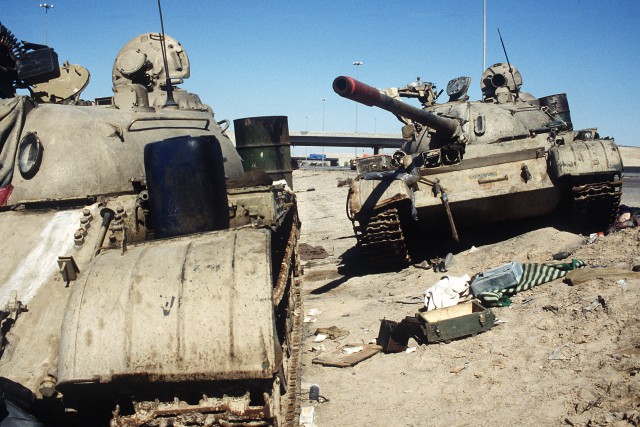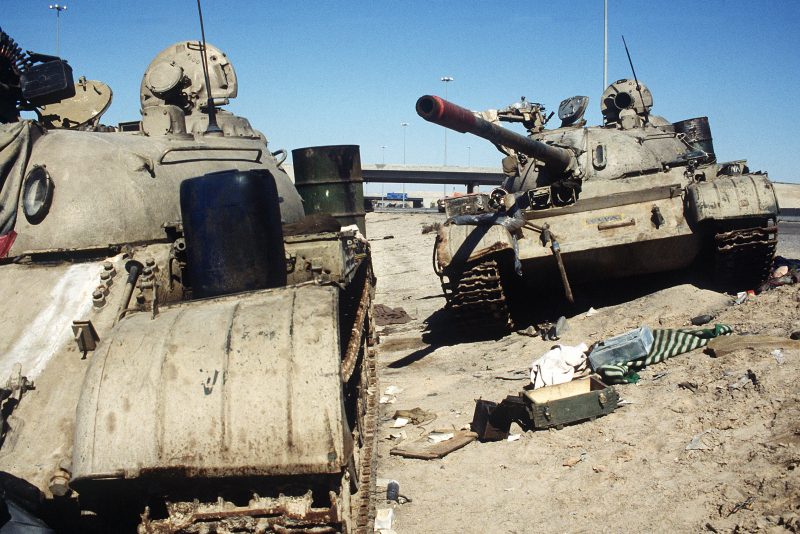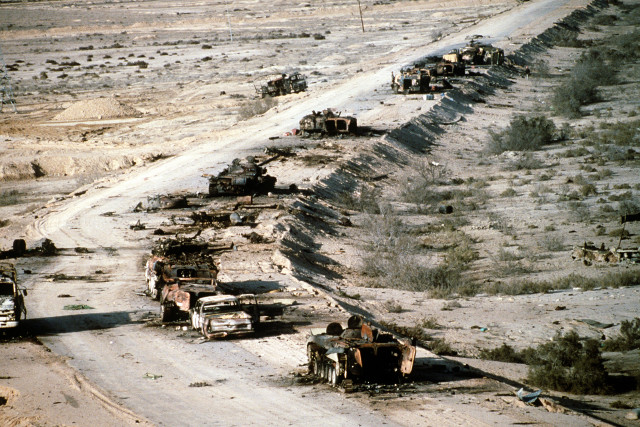
The first Gulf War in 1990 lasted for 7 months and took place between the Allied coalition led by the United States and Iraqi forces that had invaded neighboring Kuwait. The war became known by its military name Operation Desert Storm.
The Allies consisted of troops and support from almost 40 countries including from the Middle East, Europe, Britain and Asia Pacific.
Around 670,000 troops took part in the war, with more than half of those from the United States. The cost of the military efforts is suggested to have been over $61 billion for the US alone while other countries contributed around $50 billion.
The offensive on the occupying Iraqi troops is thought to have killed over 100,000 Iraqi soldiers while the Allies suffered around 400 soldiers killed in action.
It was the beginning of August in 1990 when Iraq decided to invade Kuwait. The country’s president Saddam Hussein made the move to try and take over Kuwait so that it could gain the small nation’s riches made from oil. Iraq at the time was struggling to pay off its national debts and was struggling to survive after it was eight years at war with its other neighbor Iran.
The United Nations immediately declared a denunciation of Iraq’s invasion of Kuwait and within a week had imposed tough sanctions on Iraq in an attempt to convince the country to withdraw.
When Iraq refused to withdraw, US President George H.W. Bush commanded Operation Desert Shield to begin, which ensured a build-up of Allied troops and military equipment to the region.
A few months later, the United Nations agreed to sanction military action in the region in order to force Iraq to withdraw from Kuwait. But military action was not allowed to begin until the middle of January, and so Operation Desert Storm commenced on 17th January 1991 with massive airstrikes across Iraqi positions in Kuwait, continuing for five weeks.
The Coalition flew over 100,000 sorties, dropping 88,500 tons of bombs, and widely destroying military and civilian infrastructure.
This was followed by a ground assault on 24 February, which was a decisive victory for the Coalition forces, who drove the Iraqi military from Kuwait and advanced into Iraqi territory.
The Coalition’s advance was much swifter than U.S. generals had expected. On 26 February, Iraqi troops began retreating from Kuwait, after they had set its oil fields on fire
The Coalition ceased its advance and declared a cease-fire 100 hours after the ground campaign started. Aerial and ground combat was confined to Iraq, Kuwait, and areas on Saudi Arabia’s border. Iraq launched Scud missiles against Coalition military targets in Saudi Arabia and against Israel
By the end of February fighting had ended and a short while later the leader of Kuwait, Emir al-Sabah, returned home. A cease-fire agreement was signed at the beginning of April and on the 11th April 1991 the UN declared the war in Kuwait had ended.
On 10 March 1991, 540,000 U.S. troops began moving out of the Persian Gulf.

